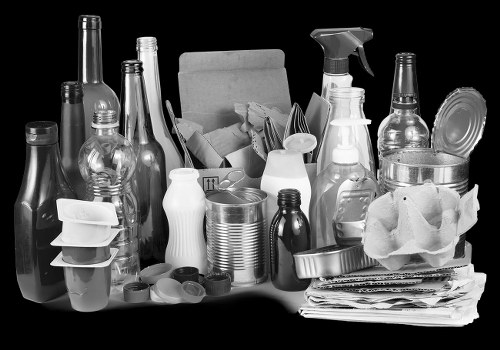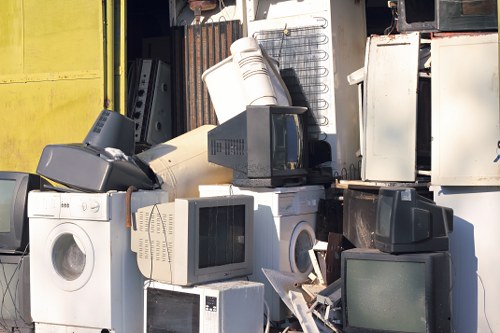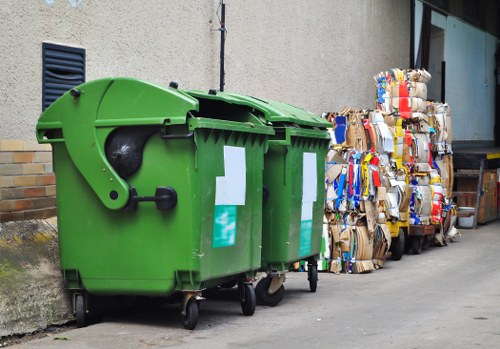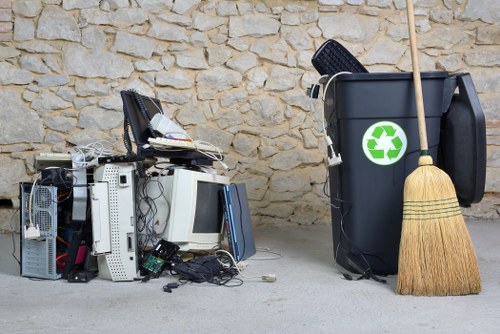Waste Disposal in London House Clearance

House clearance in London poses unique challenges, especially when it comes to waste disposal. As urban living spaces shrink and modern regulations tighten, managing waste responsibly has become a priority for homeowners and clearance professionals alike. In this article, we explore the intricate procedures, legal frameworks, and eco-friendly strategies necessary for an effective London house clearance. Our discussion touches upon a myriad of topics from the importance of sorting waste to adhering to environmental standards. Efficient waste management is not just beneficial for property owners but is also vital for maintaining the city’s reputation as a green and sustainable metropolis.
The process of house clearance demands thorough planning and meticulous execution. Today’s market requires service providers to incorporate industry best practices along with a strong focus on sustainability. Disposing of large quantities of household and commercial waste in London involves considerations that extend beyond simple removal—cost efficiency, recycling, and compliance with local regulations all come into play. In a bustling metropolitan area like London, ensuring that every bit of waste is treated with care can be transformative, turning a stressful event into a systematic and environmentally responsible activity.
Environmental awareness is at the forefront of modern London house clearance strategies. With government targets and public opinion shifting toward eco-friendly solutions, waste disposal has evolved into a multifaceted challenge. This article not only provides insights into the practical aspects of clearance but also underscores the significance of reusing and recycling, which directly impacts the ecology of the city. It is in this context that waste disposal in London house clearance becomes a cornerstone of both operational success and environmental ethics.

Understanding the Challenges of London House Clearance
London is a city of contrasts where history meets modernity. This mix creates some unique challenges when dealing with waste disposal during house clearance. Space constraints, heritage building regulations, and the sheer density of urban structures require clearance services to be highly adaptive. Professionals must consider how to dispose of waste safely while ensuring that disruptions to the neighborhood are minimal. The complexity of such operations calls for advanced planning, strategic scheduling, and an in-depth understanding of the local regulations that govern waste management in London.
A significant challenge is the limited access to disposal facilities in central London. The city's historical infrastructure means that not every road can accommodate large vehicles, and traditional disposal methods might be impractical. Therefore, clearance experts often opt for specialized waste management solutions that include working with licensed contractors and local councils to ensure that all processes comply with environmental laws. The result is a dynamic process where every clearance job is custom-tailored to the logistical and regulatory framework of the area.
Another critical aspect is managing the different types of waste produced during a house clearance. From general waste to hazardous materials and bulky items, each category must be handled differently. This involves documented protocols for sorting, storing, and transporting waste—each step subject to strict guidelines. Many companies now invest in advanced technologies and training to streamline these processes, ensuring that waste disposal in London house clearance is conducted in a sustainable and legal manner.

London's Unique House Clearance Landscape
The distinctiveness of London's clearance landscape lies in its diversity—from century-old Victorian terraces to contemporary apartments. This diversity not only adds character to house clearance projects but also presents varying challenges. For instance, older properties may have building materials that need special handling and recycling, whereas modern structures might generate a mix of conventional waste and electronic materials. Professionals in the field are continuously updating their methodologies to ensure compliance with the latest environmental standards while managing such diversity efficiently.
The role of technological innovation cannot be underestimated in today’s waste management strategies. Innovations such as automated waste sorting, digital tracking systems, and environmentally friendly disposal methods have reshaped how clearance companies operate. As technologies evolve, so does the efficiency and reliability of waste disposal in London house clearance. The integration of these technologies helps in reducing the risk of contamination and improves the overall speed and safety of the clearance process.
Adapting to change is essential. London clearance companies now invest in continuous training programs to educate their teams on new systems and regulations. These efforts are supported by local government policies that encourage sustainable practices. The result is an environment where clearance services are not only reactive but also proactive—a critical shift that reinforces the city’s commitment to maintaining high environmental standards.

Waste Sorting, Recycling, and Disposal Methods
The journey of waste disposal begins with comprehensive sorting. In the context of London house clearance, sorting waste at the source is one of the most effective ways to ensure recyclable materials are not contaminated. Clear categorization of waste items—whether they are plastics, metals, glass, or paper—facilitates the recycling process. Advanced methodologies, such as manual separation combined with automated sorting systems, have significantly increased recycling efficiencies across the city.
Recycling and reutilization play a crucial role in modern waste disposal protocols in London. With stringent EU and local environmental regulations in place, service providers are under increased pressure to minimize landfill contributions. This has led to the rise of recycling centers and specialized disposal facilities. Many experts believe that establishing a comprehensive network of recycling routines can reduce the city’s carbon footprint while promoting sustainable development.
In addition to physical sorting processes, the digital revolution has also made its way into waste management. Many clearance companies now use digital platforms that integrate waste tracking and reporting systems. These platforms facilitate the recording of waste quantity, type, and the disposal method used—enabling greater accountability and transparency. The connection between digital tools and practical methods demonstrates that waste disposal in London house clearance is evolving, bridging traditional practices with modern technology.

Environmental Regulations and Compliance in London
When it comes to clearing houses and disposing of waste in London, adherence to environmental regulations is paramount. These regulations are designed to protect public health, conserve natural resources, and ensure that waste is managed in a safe and sustainable manner. Every clearance project must align with the rules set by local and national agencies. Regulations not only direct how different waste types should be handled but also emphasize the importance of reducing overall waste generation.
Compliance with local laws is a multifaceted process that requires a detailed understanding of legislative frameworks. Clearance professionals often collaborate with legal experts and governmental bodies to remain updated with the latest changes in waste disposal legislation. The dynamic nature of these regulations can sometimes make the process daunting; however, companies that prioritize compliance tend to build reputations as ethical and dependable service providers in the competitive London market.
The environmental responsibilities extend beyond simple adherence to rules. In many cases, waste disposal in London house clearance means actively contributing to local environmental conservation efforts. Initiatives such as recycling drives, community awareness programs, and partnerships with green organizations have become common. These initiatives are an integral part of a broader strategy to transform waste management from an overlooked chore into a community-centric, eco-friendly practice.

Cost Efficiency and Value in House Clearance
Balancing Budget and Sustainability
One of the foremost concerns for both homeowners and clearance service providers is cost efficiency. The economic dynamics of London demand that waste disposal models strike the right balance between affordability and sustainability. In achieving this balance, companies often deploy streamlined processes that save both time and money. The cost implications of improper waste management can be significant, not just in monetary terms but also in environmental impacts.
Many businesses in this sector now offer customized packages that can be tailored to the specific requirements of a house clearance. These packages often include transparent price structures and include additional services like waste sorting, recycling, and proper disposal. By adopting a flexible approach, service providers can address both small-scale clearances and larger, complex projects without compromising on quality, efficiency, or environmental standards.
Financial considerations are closely linked to the incentives created by governmental policies and environmental grants. These incentives encourage the incorporation of green technologies and waste recycling methods. Clear communication about the cost-effectiveness of these approaches can reassure clients that they are not sacrificing quality for expense. In essence, an effective waste disposal strategy in London house clearance not only saves money but also enhances the overall value proposition of the service.

Strategies for Efficient Waste Management
Planning and Execution
Successful waste disposal in London house clearance requires careful planning. This planning involves assessing the volume and types of waste, estimating the associated costs, and scheduling the clearance in accordance with local traffic and safety regulations. A comprehensive plan minimizes disruptions and ensures that all materials are disposed of properly. It is imperative to adopt a systematic approach that divides the process into manageable steps—from initial assessment to final clearance and recycling.
Incorporating a detailed action plan creates a roadmap for clearance professionals and sets clear expectations for clients. Each stage of the clearance process can be broken down and explained through timelines, checklists, and contingency plans. Communication plays a key role throughout these stages. Clients must be kept informed at every juncture, ensuring that any changes in schedule or process are communicated promptly. Such transparency builds trust and solidifies a company’s reputation in the competitive London market.
The execution phase is where the strategy truly comes into effect. Teams are mobilized, waste is categorized and sorted, and specialized equipment is deployed to manage the volume efficiently. Throughout this process, adherence to safe disposal methods and recycling protocols is maintained, ensuring that every item is processed in compliance with environmental standards. This coordinated approach not only increases operational efficiency but also enhances the overall safety and effectiveness of waste management during a house clearance.

Innovative Approaches in Waste Disposal
Embracing Technology and Eco-Friendly Methods
London's modern waste disposal landscape is continuously transformed by innovation. The integration of automated sorting systems, real-time tracking, and advanced recycling methods is reshaping how clearance companies operate. Technology has made it possible to identify recyclable materials with precision, predict disposal needs accurately, and reduce overall environmental impact. This technological embrace ensures that waste disposal in London house clearance is not only efficient but also sustainable.
The latest developments in waste management technology include systems that use artificial intelligence to improve sorting accuracy and reduce contamination levels in recyclable materials. These systems can analyze waste streams and make split-second decisions that optimize the recycling process. Combined with environmentally friendly disposal methods, these innovations support a zero-waste initiative that benefits the broader community. This fresh approach to waste management reflects London’s commitment to sustainable urban living.
Another innovative trend is the adoption of on-site treatment options that reduce the volume of waste requiring transport. Mobile recycling units and compact waste processing centers enable immediate reuse or recycling of certain waste categories. This not only cuts down the cost and carbon footprint associated with transportation but also reduces the overall turnaround time for clearance projects. In many ways, these cutting-edge solutions represent a paradigm shift in waste disposal methods, combining technological prowess with environmental stewardship.

Community Involvement and Environmental Impact
Building a Sustainable Future
Beyond the technicalities of waste disposal, community involvement is another critical pillar of effective house clearance in London. Local communities benefit when clearance companies partner with neighborhood groups, educational institutions, and local councils to champion recycling initiatives. As residents become more aware of best practices, the overall efficiency of waste management improves. A community that is informed about eco-friendly methods is less likely to contribute to landfill waste, which in turn enhances the city’s overall environmental health.
These partnerships have led to various joint efforts such as recycling workshops, awareness campaigns, and volunteer-driven community clean-ups. When waste disposal in London house clearance becomes a community activity, the benefits multiply—both in financial savings and in the promotion of environmental sustainability. Companies that actively promote these initiatives are often recognized as industry leaders, setting benchmarks that others strive to meet.
This collaborative approach not only fosters a more responsible attitude towards waste but also strengthens the fabric of local communities. By aligning business strategies with social responsibility, service providers inspire more innovative and effective waste management solutions. The result is a win-win scenario where environmental imperatives drive community engagement, and effective waste disposal practices contribute to a cleaner, healthier London.

Future Trends in Waste Management for House Clearance
Looking ahead, the future of waste disposal in London house clearance is set to be influenced by advancements in both technology and legislation. The emphasis on more sustainable practices is likely to intensify, with a major shift towards renewable energy sources and increased recycling targets. Service providers are continually upgrading their practices to meet these emerging trends, ensuring that London remains at the forefront of eco-friendly waste management.
One area to watch is the development of circular economies within the house clearance industry. Circular economies focus on reusing, refurbishing, and recycling materials to minimize waste. Businesses that adopt these models can significantly reduce their environmental impact while also opening up new revenue streams through innovative business practices. This shift not only aligns with global sustainability trends but also reinforces London’s status as a leader in environmental responsibility.
Another exciting trend is the improved integration of data analytics in waste management strategies. By leveraging data, clearance companies can predict waste streams more accurately, optimize collection routes, and even customize strategies for individual households. This data-driven approach leads to enhanced operational efficiencies and greater accountability throughout the waste disposal process. As a result, future house clearance operations in London are expected to be more streamlined, more environmentally responsible, and ultimately more cost-effective.

Conclusion
Waste disposal in London house clearance is a multifaceted process that blends detailed planning with robust execution. From understanding the unique challenges posed by London’s urban landscape to embracing cutting-edge technology for efficient recycling, every aspect of clearance is designed to achieve a delicate balance between cost efficiency and environmental responsibility. As this article has shown, sustainable waste management is crucial not only for meeting legal requirements but also for fostering a healthier urban environment.
Ultimately, the future of house clearance in London will continue to evolve in response to technological advances and regulatory changes. By staying informed about best practices, clearance companies can ensure that their operations remain both compliant and sustainable. In doing so, they contribute to a broader movement toward environmental awareness and sustainable living, setting an example for businesses and communities alike.
As more consumers become conscious of environmental issues, the demand for responsible waste disposal in house clearance methods is likely to increase. Whether you are a homeowner preparing for a clearance or a professional looking to improve your services, it is important to adopt these eco-friendly strategies. The time to act is now—contact us today to learn how you can implement sustainable waste disposal practices in your next London house clearance. Book your service now and join our efforts to create a cleaner, greener London.



